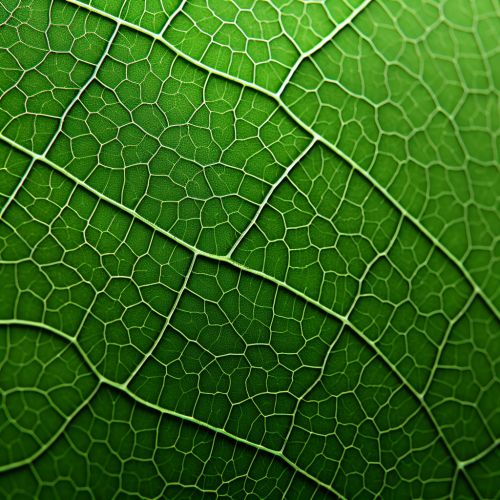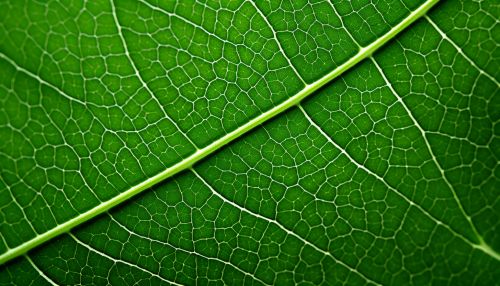Leaf Morphology and Photosynthetic Efficiency
Leaf Morphology
Leaf morphology refers to the structure and form of leaves, which are the primary photosynthetic organs in most plants. The morphology of leaves is diverse and varies greatly among different plant species. This diversity is a result of evolutionary adaptations to different environmental conditions, including light intensity, temperature, and humidity.


Leaves are typically composed of a lamina (the broad, flat part of the leaf), a petiole (the stalk that attaches the leaf to the stem), and sometimes a pair of stipules (small leaf-like structures at the base of the petiole). The lamina is the main site of photosynthesis and gas exchange. It contains numerous stomata, tiny pores that allow carbon dioxide to enter and oxygen to exit the leaf.
The shape, size, and arrangement of leaves on a plant, collectively known as the plant's phyllotaxis, can also influence its photosynthetic efficiency. For example, plants with a spiral phyllotaxis, such as many tree species, have leaves arranged in a way that minimizes shading of lower leaves by upper ones, maximizing light capture.
Photosynthetic Efficiency
Photosynthetic efficiency refers to the proportion of light energy converted into chemical energy by photosynthesis. It is a key determinant of plant productivity and growth. Photosynthetic efficiency is influenced by several factors, including leaf morphology, light intensity, temperature, and the concentration of carbon dioxide in the atmosphere.
Photosynthesis involves the capture of light energy by chlorophyll molecules in the chloroplasts of plant cells. This energy is used to convert carbon dioxide and water into glucose, a type of sugar that serves as a source of energy and building material for the plant. Oxygen is released as a by-product.
The efficiency of photosynthesis can be limited by several factors. For example, at high light intensities, the photosynthetic apparatus can become saturated, and any additional light energy is wasted as heat. This phenomenon, known as photoinhibition, can damage the photosynthetic machinery and reduce photosynthetic efficiency.
Relationship Between Leaf Morphology and Photosynthetic Efficiency
The morphology of leaves can have a significant impact on photosynthetic efficiency. For instance, leaves with a large surface area can capture more light energy, potentially increasing photosynthetic efficiency. However, large leaves can also lose more water through transpiration, which can limit photosynthesis in dry conditions.
The thickness of the leaf lamina, known as leaf anatomy, can also influence photosynthetic efficiency. Leaves with a thick mesophyll layer, the tissue where photosynthesis occurs, can accommodate more chloroplasts and thus have a higher photosynthetic capacity. However, thick leaves are also more costly for the plant to produce and maintain.
Leaf orientation can also affect photosynthetic efficiency. For example, leaves that are oriented perpendicular to the direction of sunlight can capture more light energy than leaves that are oriented at an angle. However, this can also increase the risk of photoinhibition at high light intensities.
Adaptations to Maximize Photosynthetic Efficiency
Plants have evolved a variety of adaptations to maximize photosynthetic efficiency. For example, some plants have developed sun leaves and shade leaves, with different morphologies and photosynthetic characteristics adapted to different light conditions.
Sun leaves, which are exposed to high light intensities, are typically smaller, thicker, and have a higher photosynthetic capacity than shade leaves. They also have more chloroplasts and a higher chlorophyll content, which allows them to capture more light energy.
Shade leaves, which are found in lower light conditions, are typically larger, thinner, and have a lower photosynthetic capacity than sun leaves. They have fewer chloroplasts and a lower chlorophyll content, but their large surface area allows them to capture more light energy.
Some plants have also developed mechanisms to increase the concentration of carbon dioxide in their leaves, thereby increasing photosynthetic efficiency. These mechanisms, known as C4 and CAM photosynthesis, involve the use of specialized cells and biochemical pathways to concentrate carbon dioxide.
Conclusion
In conclusion, leaf morphology and photosynthetic efficiency are closely interconnected. The structure and form of leaves can greatly influence the ability of a plant to capture light energy and convert it into chemical energy through photosynthesis. Understanding these relationships can provide valuable insights into plant productivity and growth, and can inform strategies for improving crop yields and conserving plant biodiversity.
